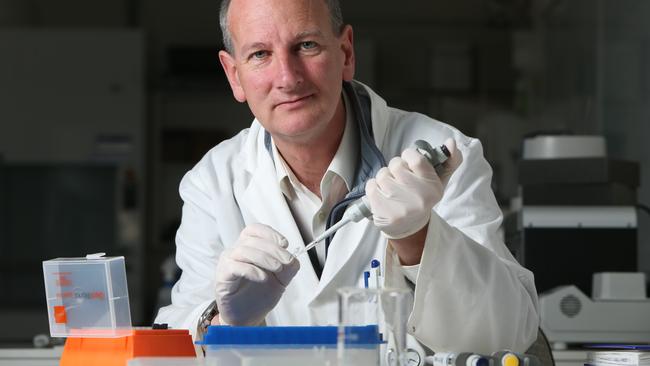Flinders develops test to find who sheds most DNA
A NEW forensic test developed at Flinders University is about to make the perfect crime even tougher to achieve. And male crims will have even more reason to sweat.
IT just got even harder to get away with it, especially if you’re a man.
A new test, developed by Flinders University scientists, can reveal the amount of DNA people shed to help determine whether they were actually the last person to make contact with an item.
And, it turns out men tend to ‘shed’ more DNA than women.
Professor Adrian Linacre, Chair in Forensic Science at Flinders University, said people shed DNA at different rates which could make it hard to establish when they had been in contact with a person or object or even if DNA had been transferred innocently by another party.
The shedder status of a specific person of interest may be relevant in determining the likelihood of whether a major contributor in a mixed DNA profile was the last person to make contact with an item and is therefore linked to a crime.
But, until now, there had been no way of telling if someone was a heavy shedder or a poor shedder.
“We know that some people pass on more of their DNA because when they touch something more of their cells are left behind, they are called shedders but it’s very difficult at the moment to see who is a shedder,’’ he said.
“What we have developed is a simple test which can work out if an individual is a shedder in a matter of minutes which tells us who has the better chance of passing on DNA.”

How DNA is shed has not yet been confirmed but close examination shows that cellular material on a fingerprint seems to be associated with the pores, which is where sweat is secreted.
Professor Linacre — himself a ‘heavy shedder’ — said males tended to be in the higher shedder range than females.
“I am at one extreme and a heavy shedder so if I hold something for 10 seconds I pass on much more cellular material (the source of DNA) than someone who is a poor shedder,’’ he said.
“We have found that there is a continuum of shedders with most people in the middle and called intermediate shedders.
“We did find that males tended to be in the higher shedder range than females but recently found a female who is towards the heavy shedder range.
“But there is nothing odd or visible about shedders.
“This is not related to sweat or oily hands so you cannot look at someone and say that they look like a heavy shedder.
“Being able to detect DNA on surfaces that someone has just touched is a real break through and overs real potential in the future to assist with crime scene and evidence recovery work.”
